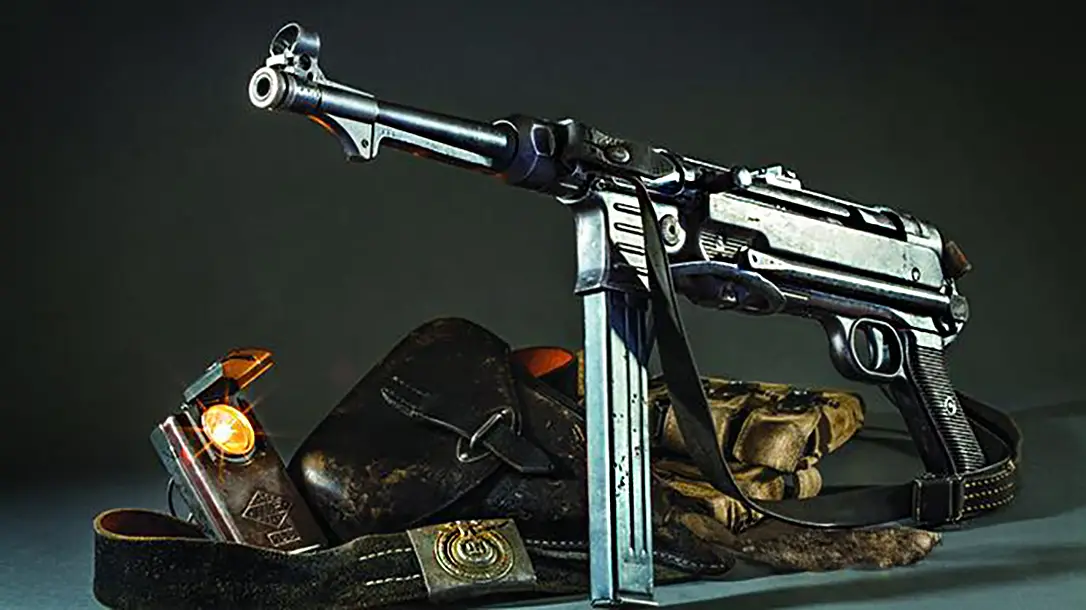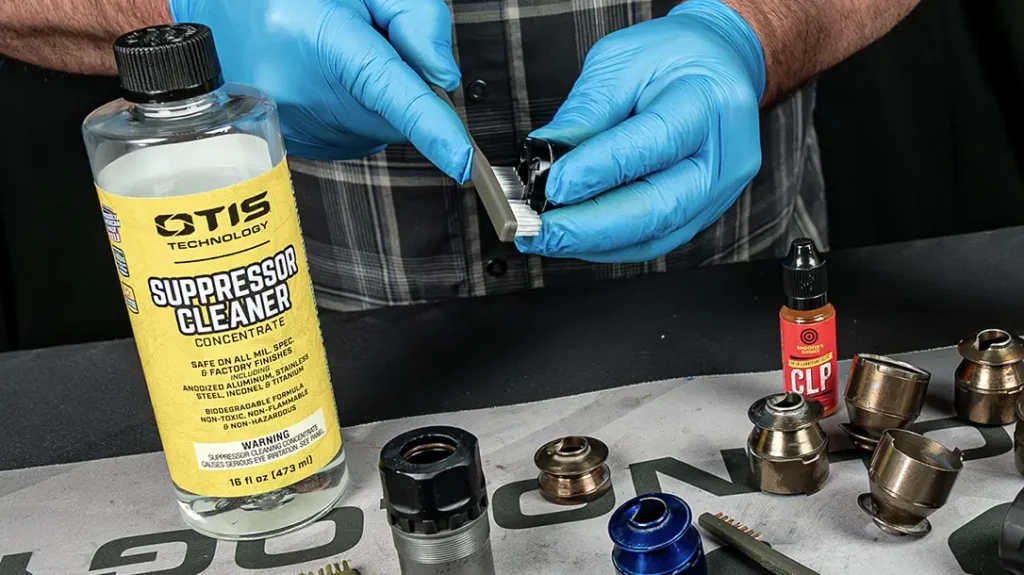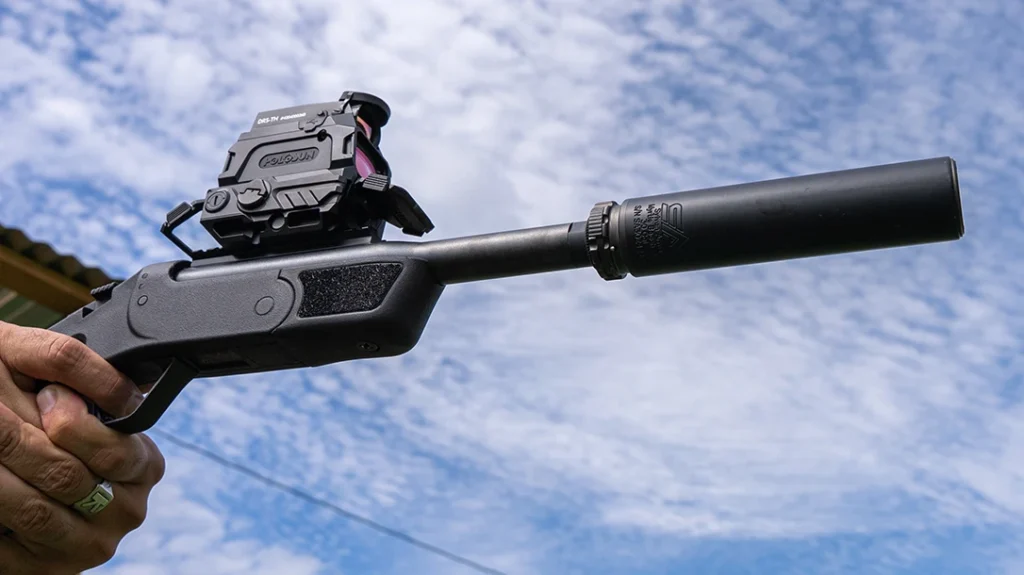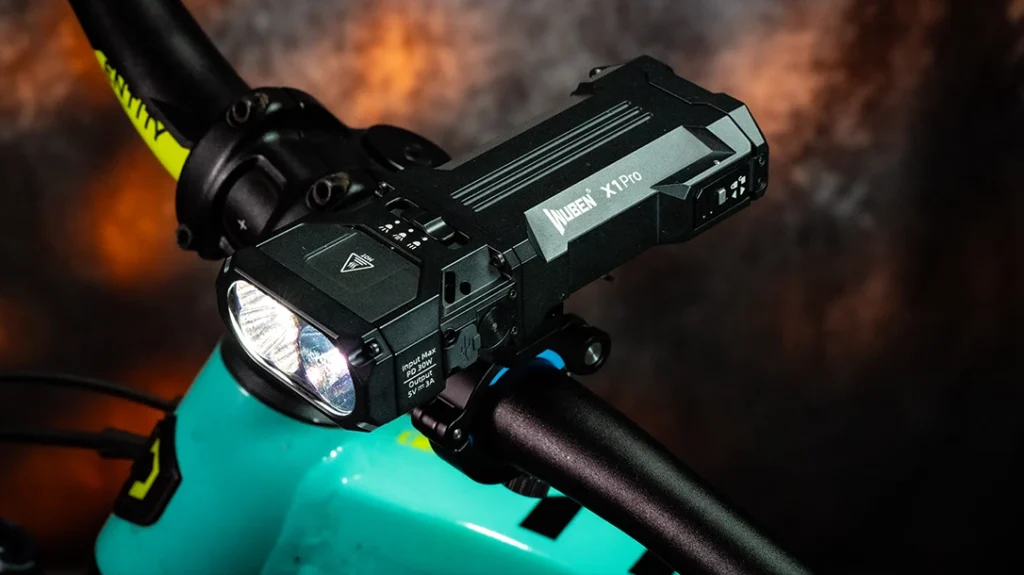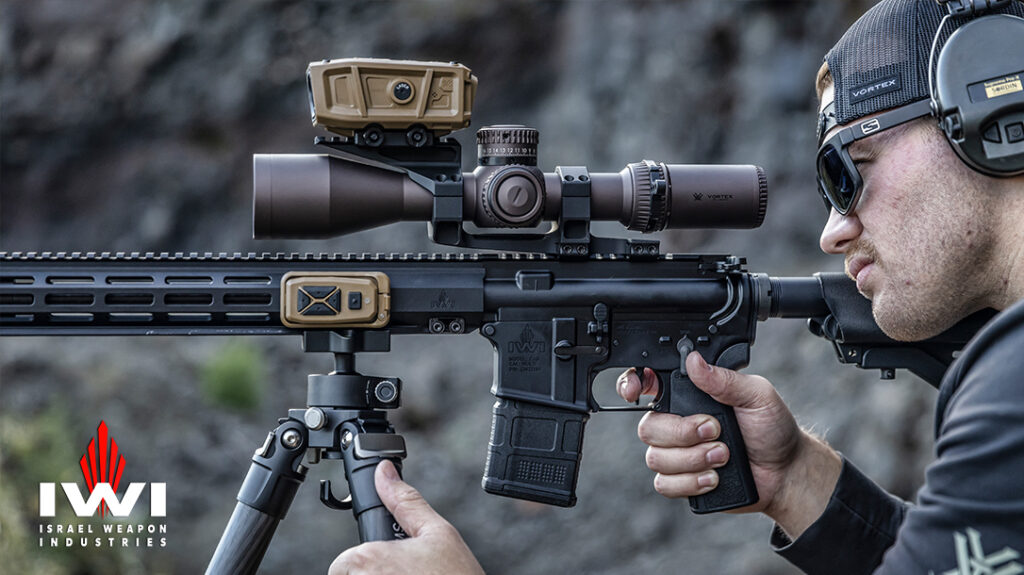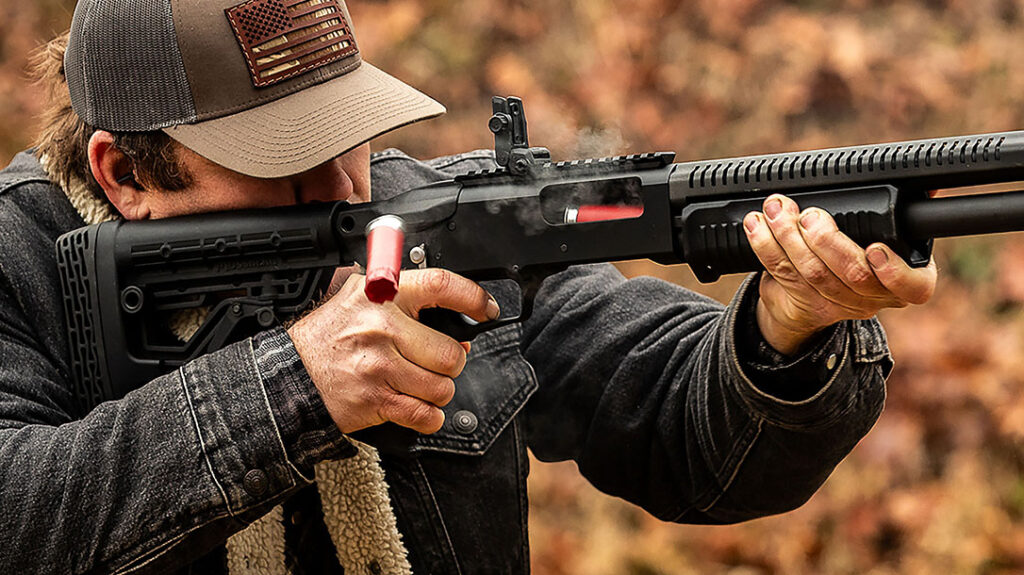The MP40, or Maschinenpistole 40, was a turning point in submachine gun design and manufacture. Early submachine guns relied on heavy and expensive milled-steel components. They also featured bulky wooden stocks inspired by contemporary carbines. The MP40 pioneered the use of economical and lightweight materials such as aluminum, plastic, and sheet-metal stampings. As Thomas Nelson observed in The World’s Submachine Guns, “The MP40…left a legacy in production techniques which are copied by practically every country to indulge in submachine gun production since the MP40 set the pace.” Although the MP40 was certainly revolutionary, it also benefitted from earlier German designs.

Long Before the Classic MP5 – The MP40 Ruled the SMG World
Toward the end of World War I, the German army pioneered the design, manufacture and use of the submachine gun. Trench warfare demonstrated the need for a compact, lightweight, rapid-firing gun that could serve as a “trench broom.” German trench raiders frequently expended six or seven times their planned allotment of grenades when clearing trenches and fortifications. The lack of appropriate firearms forced German trench raiders to desperate measures. For example, they armed themselves with long-barreled Artillery Lugers fitted with shoulder stocks while carrying as many 32-round “snail drum” magazines as they could scrounge. Equipped with these, German troops used them as improvised rapid-fire semi-automatic carbines.
Advertisement — Continue Reading Below
Although designers in almost every warring nation were working on appropriate firearms, the 9mm Luger MP18/I was the first submachine gun to reach the trenches in significant numbers. Designed by Hugo Schmeisser and built by Bergmann, approximately 35,000 were made before World War I ended in November 1918. The first MP18/Is were issued to assault troops. However, the Germans planned to make them general issue once sufficient numbers were available.
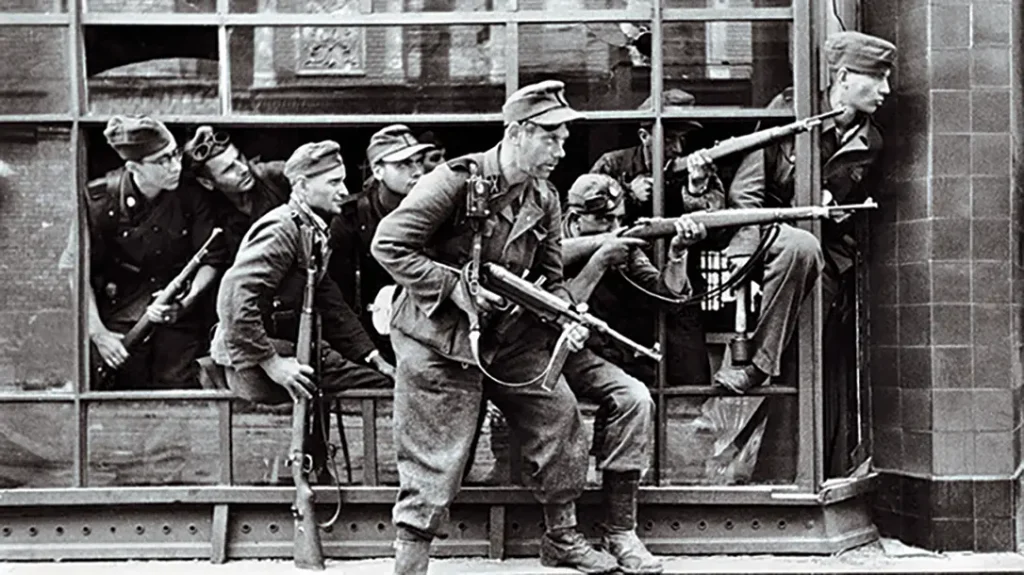
Learning From Defeat
There were not enough MP18/Is to change the outcome of the war for Germany. However, it did help accelerate changes in small-unit tactics. Importantly, it made an impression on the Allies. Consequently, they ensured the Treaty of Versailles specifically prohibited the German army from having submachine guns.
Advertisement — Continue Reading Below
The development and production of submachine guns continued. This was because German manufacturers found a rich market among domestic and foreign law enforcement agencies. As widespread social unrest throughout Europe followed in the wake of World War I, nothing was really done to curb the sale of firearms to German police and paramilitary units. The Allies didn’t want to see Germany fall into the hands of communist revolutionaries, despite being against any re-armament.

Erma Sub Machine Gun Manufacturer
Perhaps the most active and innovative German submachine gun manufacturer of the post-WWI era was Erma (Erfurt Maschinenfabrik). In fact, Erma specialized in submachine guns, and it was one of the few gun makers to do so. Other than Erma, Auto-Ordnance, the U.S. firm founded by Colonel John Taliaferro Thompson, also specialized in submachine guns. Erma’s design, manufacturing and management staff members were culled from workers let go from the defunct state arsenal at Erfurt.
Advertisement — Continue Reading Below
When Hitler began re-arming Germany in the mid-1930s, one of his first priorities was the German army’s fledgling tank corps, or Panzertruppe. In addition to tanks, the armored troops needed specialized equipment, including small arms. They needed a firing-port weapon that could double as a submachine gun for the mechanized infantry accompanying the tanks. Consequently, the new submachine gun had to be compact enough to fit in the cramped confines of an armored vehicle. Naturally, the armored corps turned to Erma. Erma’s designers created a simple design that incorporated many innovations, including a folding metal stock.
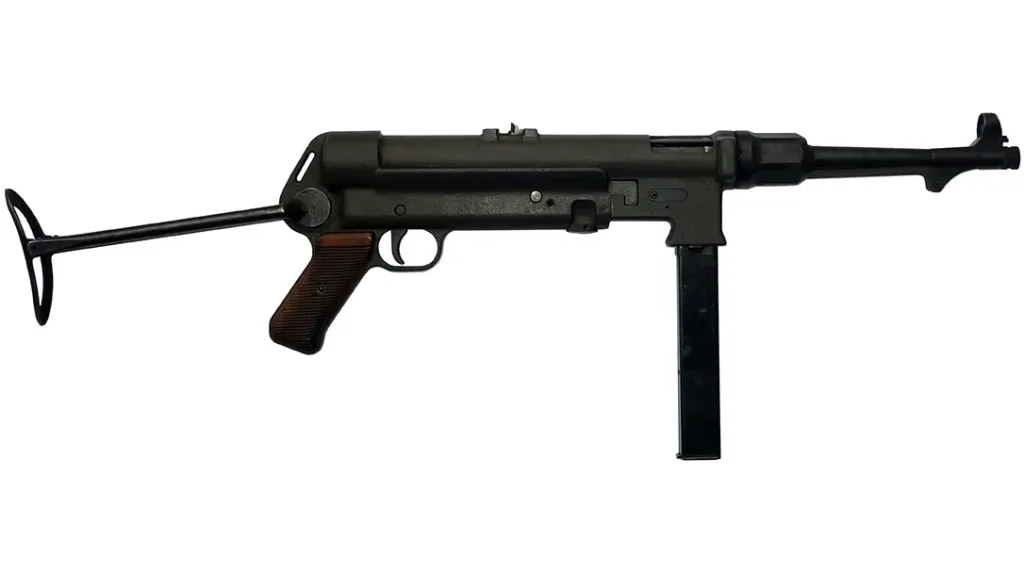
Earlier MP38
Unfortunately for Erma and the new armored corps, the German army’s ordnance board, or Heereswaffenamt (HWA), caught wind of the new project and nixed it. At the time, German troops were equipped with a hodgepodge of submachine guns. Everyone including the new paratroops (Fallschirmjaeger) was begging for a special design. If the HWA were going to approve a new submachine gun for the tank corps, it would have to satisfy the needs of other specialist troops as well.
Advertisement — Continue Reading Below
The HWA recognized two main problems with the outdated designs in its inventory, such as the MP-28II, MP34 and the EMP. These models, like other first-generation submachine guns, were designed around wooden stocks that added a tremendous amount of unnecessary weight and bulk. This led to complaints from the paratroopers and tankers. Secondly, the guns were manufactured through traditional production methods such as milling and forging. While sturdy, these methods led to small arms that were far more expensive and time-consuming to produce than necessary.

The Classic MP40
The experience of Germany’s Condor Legion in the Spanish Civil War showed the German military leadership that the fluid, mechanized combat they advocated made the need for fully automatic small arms more acute than ever. As a result, the HWA called on Bernhard Gaipaul, the director of Erma. He was asked to submit a submachine gun that could be mass-produced for use by the regular infantry. It should also meet the needs of the armored corps, paratroopers, police and other special units. Gaipaul presented Erma’s original design for the armored corps virtually unchanged. As it was quickly approved by the HWA, it was adopted as the Maschinenpistole 38, or MP38.
Advertisement — Continue Reading Below
From there the natural evolution led to improvements on the 38. The ultimate development led to the MP40. In all, there were over a million MP40s made. While they saw their primary use in WWII, there are some countries still using this classic sub machine gun today.
